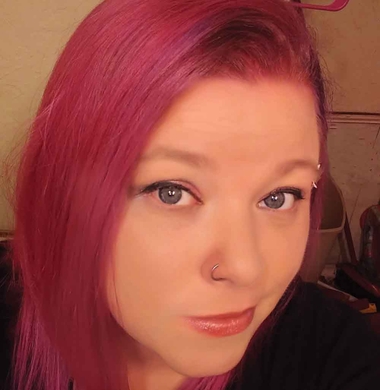Breast Cancer Awareness Month: One woman’s story

by Kara Kliewer
Staff Writer
“My cancer treatment was a whirlwind of emotions,” said breast cancer survivor Cheritty Molinar. “Thank God [I’m] still cancer free 11 years later, but damn!”
Molinar lives in Harrah, Okla. and identifies as bisexual.
“I had the lump in my breast noticeably for three years. I didn't have insurance so I just let it be,” Molinar added sadly. “I mean, come on, it doesn't ever happen to you right?
I got a great job with good insurance and went to the doctor finally and, surprise, the doctor said, ‘we need to do a biopsy.’”
“My partner at the time held my hand and kissed me before surgeries and the uncomfortable stares were awful,” she said. Her partner was a woman.
“But my caregivers were amazing other than that. They accepted me and her with no problems.”
October is in full swing. It’s time to recognize National Breast Cancer Awareness Month and take proper precautions.
Nationally, one in eight women (about 12 percent) will develop breast cancer in their lifetime. Unfortunately for LGBT+ women, seeking treatment can be an anxiety ridden process due to fear of discrimination.
Many women don’t tell their health care providers about their sexual orientation because they don’t want discrimination to affect the quality of health care they receive. This can make it harder to have a comfortable relationship with a provider, according to the American Cancer Society (ACS).
By the time Molinar could get treatment, the cancer had spread to both breasts.
“I had a break down. All I wanted was my mom. She was there for me through it all. After surgery was done and I had recomposed myself we went to the oncologist to make sure we got it all. Nope. So, we tried chemotherapy. It was the worst experience.”
Molinar went on to face a double mastectomy with reconstruction and went into remission.
Of course, all women are susceptible to breast cancer. However, a few factors make LGBT+ women more at risk.
Women who haven’t had children, haven’t breast-fed and are older when they first give birth – all factors more likely to affect lesbians and bisexual women – are also at a slightly higher risk, said the ACS.
If you are a woman or have breasts and identify as an LGBT+ individual, it is vital to take precautions and follow a few simple steps.
The ACS has these steps categorized by age:
- Women ages 40 to 44 have the choice to start annual breast cancer screening with mammograms if they wish to do so.
- Women age 45 to 54 should get a mammogram every year.
- Women 55 and older should switch to a mammogram every two years, or can continue yearly screening.
- Screening should continue as long as a woman is in good health and is expected to live at least 10 more years.
In addition to risk factors, a woman whose mother, sister or daughter has or had breast cancer is at higher risk. Being overweight, especially after menopause, or drinking alcohol may add to the risk, further added ACS.
Ultimately, if you are someone who identifies with any risk factors, following these steps are simple and smart ways to stay as safe as possible.
“I’m alive, right?” exclaimed Molinar who, in 2013, had a “miracle” baby girl after doctors told her children were not possible.
“After I had her, my breast swelled and more breast tissue was found. I went for another mammogram and panic set in, but thank God I’m still cancer free.”
Copyright The Gayly – October 2, 2017 @ 9:45 a.m. CDT.





